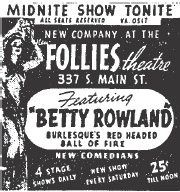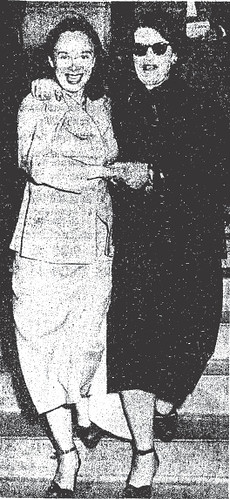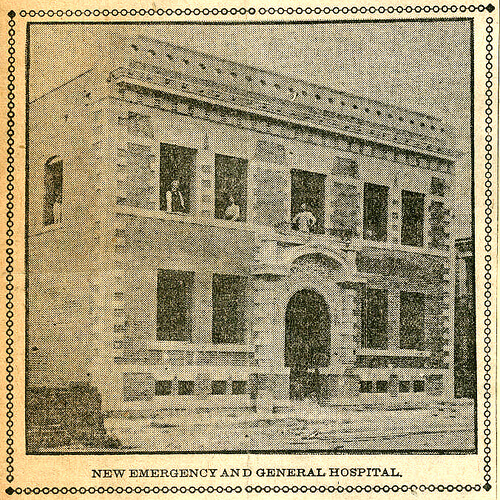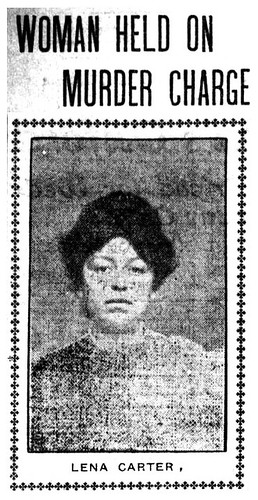 In June 1907, a drunk woman was arrested for shooting her sweetheart during a fight in a rooming house. It should have been a straightforward case, but things are rarely simple in SRO land, and the unravelling of loose threads soon ended the career of a young policeman.
In June 1907, a drunk woman was arrested for shooting her sweetheart during a fight in a rooming house. It should have been a straightforward case, but things are rarely simple in SRO land, and the unravelling of loose threads soon ended the career of a young policeman.
Right after the shooting, when things still seemed clear cut, the police told the press what they believed had happened. A newsboy called Buck Wilson and his girlfriend, Lena Carter, “an exceptionally pretty girl about 19 years of age” who, until recently, had been working in a massage parlor, had spent a warm Sunday afternoon and evening at Venice beach in the company of Buck’s roommate and his girlfriend, Grace Rhyn, “a few years older than Miss Carter and also very pretty”. When the party returned to the rooming house at 523 West Sixth street where Buck and his roommate lived, they were all drunk. Shortly after midnight, an argument between Buck and Grace Rhyn suddenly turned violent, and they started to fight. Lena Carter tried to intervene but Buck knocked her to the floor. At this, she ran to an adjoining room and procured a loaded revolver. She returned to the room where her lover and her friend were still struggling, aimed the pistol at Buck’s back and pulled the trigger, sending a bullet through Buck’s left lung. She fired again, but the shot went wild.
The shots were heard in the street, which was soon filled with hundreds of excited people. The police had to force their way through the crowd in order to get to the apartment. Everyone present was arrested and taken to the police station, with the exception of Buck, who was taken to hospital. None of them would speak to the police, but Buck was eventually convinced to give some details of what had happened, which the police dutifully relayed to the reporters.
But something wasn’t right, as became clear when a patrolman called Holden went to his superiors with a new piece of information.
Patrolman Holden, who had pushed his way through the onlookers and made the arrests, had seen another policeman at the scene, Patrolman Charles Norris, a new officer who had evidently been there before the crowd had formed in the street but did not stick around to assist Holden. After Holden had taken the suspects to the station, he tried to contact Patrolman Norris to find out what he knew about the shooting and why he had left the scene, but Norris was nowhere to be found. According to the manager of Norris’s rooming house, which was just across the street from where the shooting had occurred, Norris had hurriedly removed all his belongings from his room and left for some unknown place.
His strange behavior took on a more sinister cast when it was revealed that the gun that had been used to shoot Buck belonged to Norris. When questioned about the gun, Lena Carter admitted that Norris had been present, but maintained that she alone was to blame for the shooting.
Late on Monday afternoon, Norris turned himself in at his police station and was immediately taken to the cells, where, that night, he told his side of the story.
He had been walking home along West Sixth street when he heard people quarrelling in the building he was passing. He went up to quell the disturbance, and tried to pull Buck Wilson off Grace Rhyn. While he was leaning over, Lena Carter pulled his revolver from his pocket and started shooting. As he tried to stop her and get the gun back, Patrolman Holden entered the room, whereupon Norris fled, fearing implication in the affair.
Why had he quit his rooms and gone into hiding? He could give no clear explanation, or at least none that was accepted by his colleagues. Norris was told that he would be suspended from duty and would likely be charged with assault with a deadly weapon.
The next morning, an elderly couple arrived at the station — Norris’s parents, who knew nothing of his arrest and had become worried when they had missed him on his beat. The desk sergeant did not have the heart to tell the old people that their son was locked up and took them to a detective, who broke the news gently. “Mrs Norris said, with tears in her eyes, that her boy was good,” the police told the press, further saying that the father was an old soldier, “and proud of it”, and was ashamed that his son should be in jail.
At the request of the district attorney, Norris was paroled in order to be with his parents while awaiting a formal charge. “When their son was finally released, the old couple straightened their bent backs and tried to walk proudly down the street. Even the policemen who are used to touching scenes could not help sympathising with the young man and his fond parents”.
Norris and Lena were tried separately. At his trial, Norris finally confessed that he had known Lena Carter for some time, having met her when he walked a beat on Spring street, and had recently “spent two nights” with her, his wife being absent in Cincinnati. Further, he admitted that it was no accident that he had been in the room; Lena had sent for him on the night of the trouble, just prior to the shooting. Everything else, however, was as he had originally said: he had been trying to separate the brawling man and woman when Lena took his gun and shot Buck, and he had panicked when officer Holden arrived and had fled in order to avoid being dragged into the mess.
If only Holden hadn’t recognised him. If only he hadn’t left his gun behind.
If only he had never met Lena Carter.
At Lena’s trial — at which it was revealed that her real name was Mrs Evelyn Ferguson (she had used the name Lena Carter “for convenience”) — she claimed that she had been frantic with worry that Grace Rhyn’s weak heart would give out during her struggle with Buck, and had simply used the quickest means possible to stop the fight, never meaning to hurt him so seriously. Her story was undermined somewhat by testimony from a neighbor that she had cried, “Let him die!” as Norris had tried to help the wounded man.
The police court accepted that Norris had no part in the shooting of Buck Wilson, but took a dim view of his disgraceful disappearance following the crime. He would face no criminal charges, but he would never work as a police officer again.
Lena/Evelyn’s fate is a mystery, as the coverage of the trial appears to end abruptly halfway through the proceedings. Presumably, the case was either dropped or reached a non-newsworthy conclusion, perhaps due to Buck’s full recovery a month after the shooting, which would have reduced the charge from murder to attempted murder. Whatever the case, it does not seem to have been reported, and Lena — that is, Evelyn — vanishes from history. The last glimpse of her that we catch shows her standing in court on July 19, 1907. “Neatly attired in a blue suit,” she stood alone in the dock, facing an uncertain future. However, “aside from a little nervousness, she seemed to be thoroughly satisfied with her prison life.”
Sources: Los Angeles Herald, June 10-13 and 26; July 19.
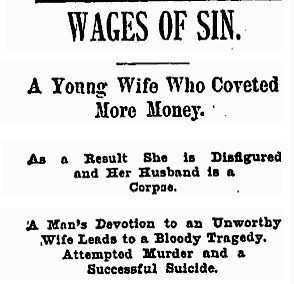

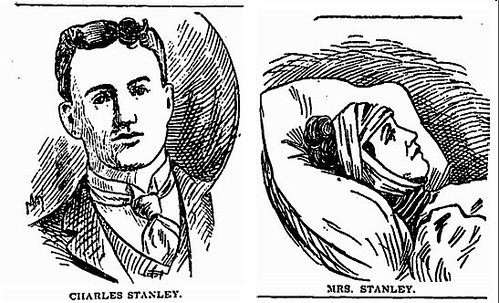



 In June 1907, a drunk woman was arrested for shooting her sweetheart during a fight in a rooming house. It should have been a straightforward case, but things are rarely simple in SRO land, and the unravelling of loose threads soon ended the career of a young policeman.
In June 1907, a drunk woman was arrested for shooting her sweetheart during a fight in a rooming house. It should have been a straightforward case, but things are rarely simple in SRO land, and the unravelling of loose threads soon ended the career of a young policeman.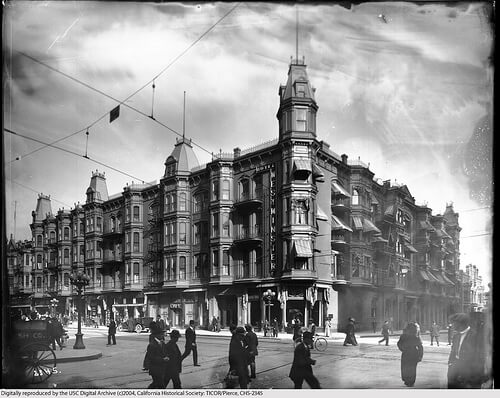

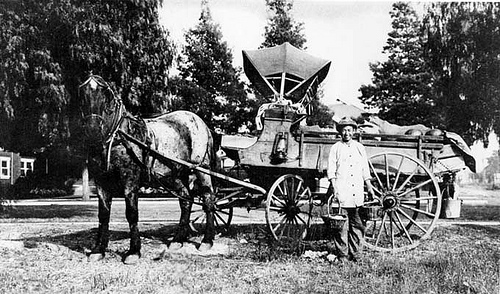

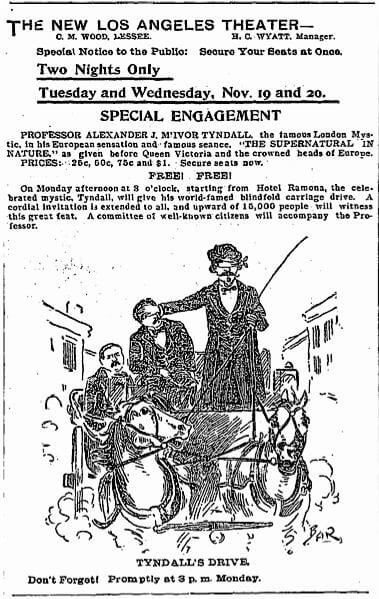



 Betty Rowland, the Red-headed Ball of Fire (aka the Rhode Island red-head) was a force to be reckoned with during the heyday of burlesque.
Betty Rowland, the Red-headed Ball of Fire (aka the Rhode Island red-head) was a force to be reckoned with during the heyday of burlesque.
